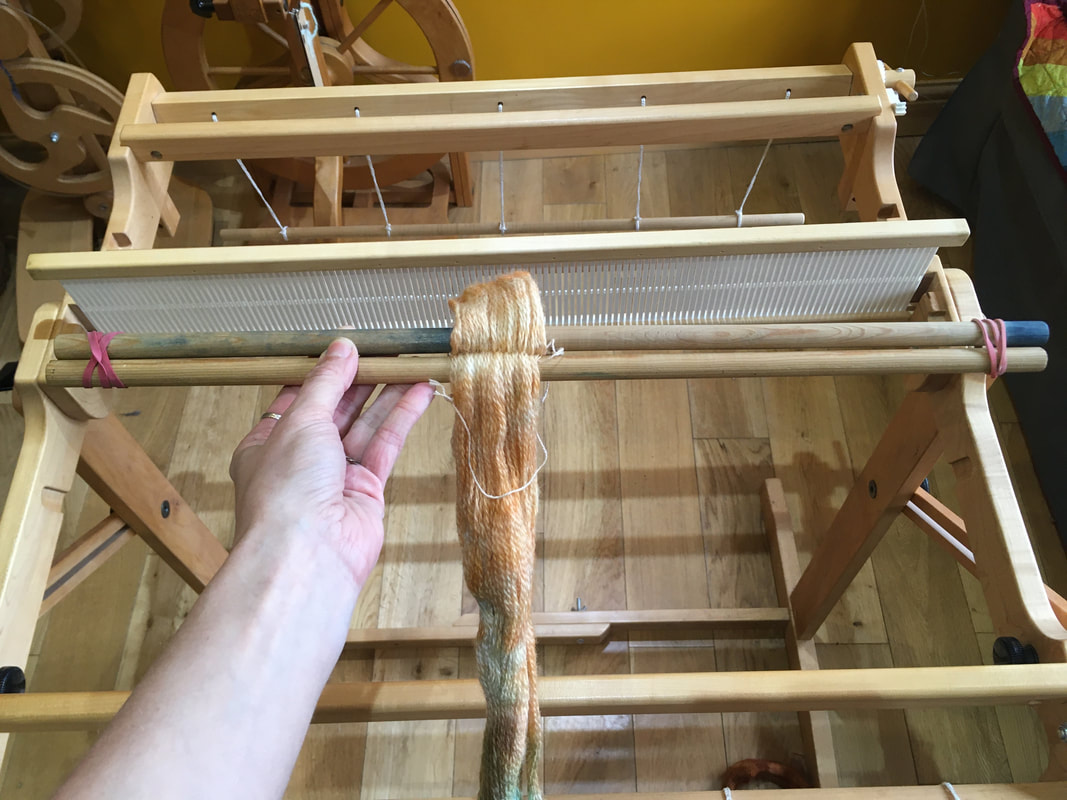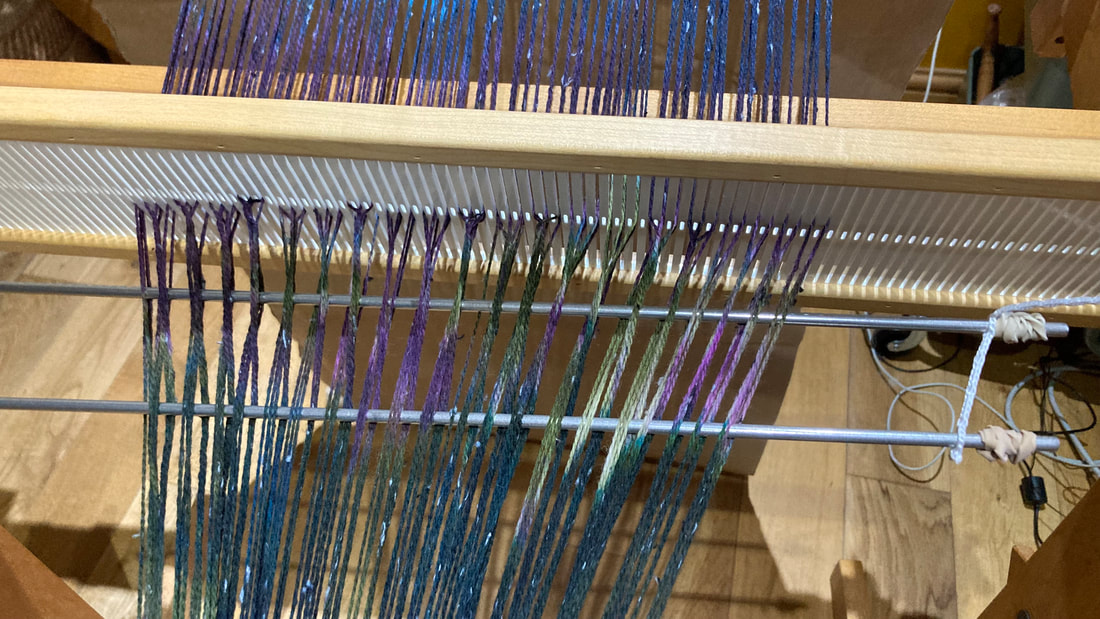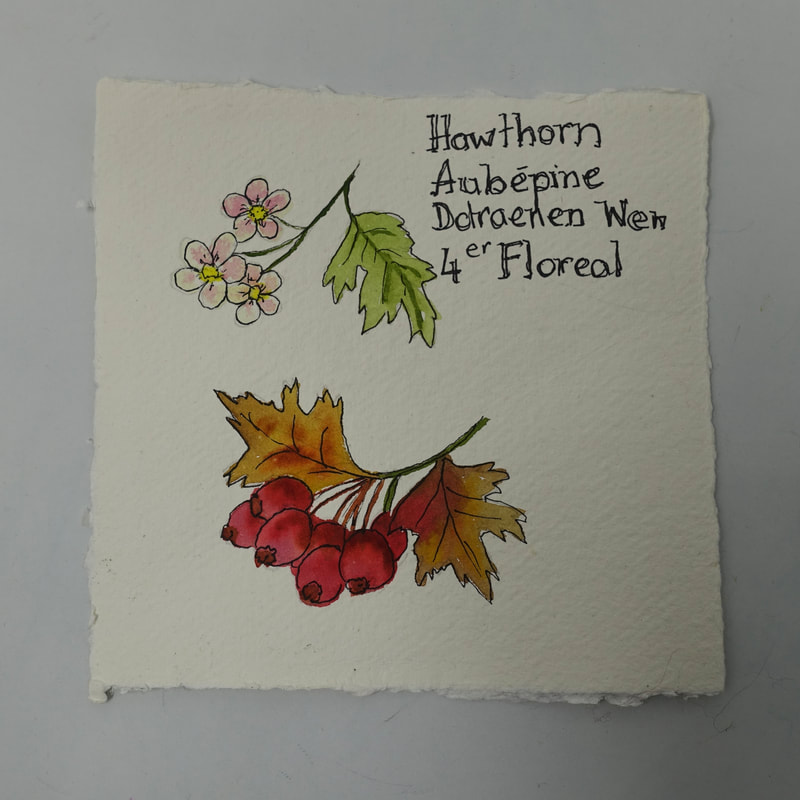|
By popular request! A couple of years ago, when we were all stuck at home I hosted quite a few live online workshops, and recorded them so people could watch them back later. Since then there have been quite a few people who missed the original sessions ask about making the recordings available. The oldest of these is Silk Spinning. I've taken the recorded videos and added in lots more information and photos. Lots of it has appeared in various forms over the past few years, but this is the first time I've collected everything together in one place. The videos are recordings of Zoom sessions, so aren't broken up in to short chunks, not the best quality, and the auto-captions are uncorrected. However, I think they're still useful! The whole course is just £5, in reflection of all of these things, and you have the chance to leave comments and ask further questions. The first text only lesson is a free-preview so you can check it out before handing over the price of a cup off coffee and piece of cake! Non-Wool fibres and British wool breeds are on the way, I'm adding them as I get spare chunks of time to put everything in to a logical order.
The month of frosts, starting November 21st and taking us full circle to December 20th. Grug (remember the u sound is more like an elongated i), is cymraeg for heather, this beautiful plant flowers in late autumn (though maybe not quite as late as this month, but I suspect the calendars creators were struggling a little with plant names at this point in the year!) Our final colour, and if I know anything about all your colour choices I have a feeling this one might be favourite shade for many of you! You can find it in the online shop until stocks run out.
Our Calendar finished today, the 12 Days of Christmas comes to and end. Traditionally this would mark the end of the festivities over the darkest days of winter. Tomorrow was St Distaff's day, the traditional restart of work for women, when they would go back to their distaffs and their spinning wheels and recommence the never ending work of spinning yarn to weave cloth. From October 22nd to November 20th, the month of mists. 23 Brumaire was the day of Madder, late autumn is often a good time to harvest and replant this to get maximum red colour from the roots, which have had a full summer to grow fat and full of red dye. Gweirddrud is actually a word that means mad or wild, it's also known as Cochwraidd or the a welsh version of the name in English; Madr or Madyr. Coch is red in welsh, the name giving a hint to the colour hidden in the roots! We've got a felling of mists drifting through conifer woodlands for todays colour, and as ever it's in the shop.
I wrote the first set of instructions for this back in 2020 when I first started selling hand dyed warps. Since then I've changed the winding method to use multiple ends, as this is much more time efficient, but it does mean some of the photos on the old version are slightly out of date. In essence it's the same method however! Most of us who started out with rigid heddle looms have probably only ever used the direct method of warping, but it's just as simple to put a pre-wound warp on your loom. There are lots of resources on the internet, a few You Tube videos, but not very much by way of step-by-step photo tutorials, which is my favourite way to learn because it makes it very easy to follow the instructions as you work, without trying to pause a video, or wish it would get to the point, or go a bit more slowly. This is my method, it's largely the same as the one in Inventive Weaving on a Little Loom. Newer Hilltop Cloud warps have a cross at both ends, so you can work in either direction, older ones only used a cross at one end. The cross is a criss-cross pattern put in as the warps are wound which hold the threads the correct order and stops them getting tangled. In the photo above it's on the right hand side, the end also has more ties, including one around the cross itself, and one in the loop above the cross. Do not cut any ties until you have assembled all your equipment. I recommend using lease sticks. These are sticks that you are going to insert either side of that cross to hold your threads. If you are only doing a narrow warp with bulky yarn you can get away with just using your hands (but you are then attached to your loom until you have completed the warping process. You need 2 smooth sticks of some sort. I have used dowel, but you can use bamboo canes or flat pieces of wood (the slats from blinds work well). In these photos I use the metal rods that I come with my Louet Erica loom as they have a texslov cord which holds everything in place really easily. The first step is to identify the 2 loops either side of your cross. Pull each of the ties in that loop in opposite directions and it should open up. (This is easier when you can do it with 2 hands and don't need one hand to hold the camera!) Once you've opened up your loops slide in a stick, one on each side of the cross. Then attach your sticks together in some way. You can drill a hole through your sticks/dowel and thread through some string, but a loosely wrapped elastic band also works, though you do need to leave enough space between the sticks for the yarn to slide. Only once you have done this can you remove the ties. Be careful... you only want to cut through the ties and not the strands on your warp. Start to spread your warp out on your lease sticks, and work out where you need to start threading your heddle in order to wind your warp on in the centre of your loom. To do this check how many ends your warp has, and divide it by 4, we'll call this number X. Fid the centre of your heddle, and count along X slots. This is where you will start threading your warp through the heddle. The exact method of the next step will now depend on the type of loom you own. If your loom has a removable apron rod (the piece of dowel held in place with texslov cord that you warp your yarn around when direct warping) the next step is simple. If you have a loom with a fixed apron rod (eg Ashford looms), you can either modify your loom to make it removable, or will have to cut the loops open and tie your warp in place on the back beam just as you would normally do on the front beam. This last method will increase your loom waste, and will require care if you want to keep your colours in your warp aligned. To modify your loom you'll need to remove the plastic rods holding the rod in place, and replace them with texsolv cord. Slide your back apron rod out of the loops on the texsolv cord. If you can, leave the loops open, it will make it easier to slide the rod back in place once your warp is looped on. You're now going to thread each loop through a slot in your heddle, and slide it on to the back apron rod. The cross will keep the threads in the right order. It doesn't matter which of the threads from the group you pick, so long as they're all from the same section of the cross. These two threads are from the same cross, but I could thread them in either order. Keep going across the whole loom, threading loops in order, making sure not to miss out any slots. Sliding loops on to the back beam as you work, adding in the lops to hold the back beam in place as you work along. Once you're done your loom should now look like it does when you use a direct method of warping. Loops of yarn around your back apron rod, and 2 strands of yarn through every slot, and the remainder of the warp dangling off the loom. You are now safe to remove your lease sticks, and start to wind your warp on to the back beam. Because these threads were wound in groups there may be places where they're a bit stuck together. Don't force them, just stop, and ease the threads apart. It can be a bit fiddly but it's still much quicker than walking backwards and forwards to direct warp! Keep the threads under tension as you warp and that helps. Stickier wool warps will be more fuzzy than silk warps so won't slide past each other so easily, but with patience the whole thing will wind on smoothly. You can then cut open the loops and thread one end from each slot in to a hole. Tie on to the front apron bar and you're ready to weave!
Ever important to the French, this month of Vintage... the wine harvest! This month starts on the 22nd September, and ends on the 21st October, and then at the end of the month were 5 days of holiday, otherwise this carefully designed agricultural calendar, with perfect 30 day months would quickly fall out of sync with the realities of the seasons! These were known as Sansculottides or complementary days, on leap years there would be an extra day of holiday. Today is another day when trilingual translations have gone awry... Belle de Nuit, the name of the day is not Belladonna, also known as nightshade. Belle de Nuit is the french name for Mirabilis jalapa, also known as The Marvel of Peru or Four o'clock flower, a beautifully fragrant plant whose flowers open in the early evening. As for the welsh? Who knows where that came from though marwol does mean deadly. The actually welsh for belladonna is codwarth.... let's move on and simply enjoy the picture! The colour for today had to be inspired by grapes... and we all love a rich purple! Find the limited edition in the shop.
Fructidor was actually the final month of the year, starting 18th August and running to 22nd September, this was the month of fruit. In Cymraeg hazel is cyll and is sometimes also called collen... remember that double ll isn't the same sound it makes in english. Hazelnuts are everywhere where I live, and as a result we find hazel trees popping up everywhere because the mice bury them as winter stores. You can tell what sort of small rodent ate them by the shape of the hole in the shell.
Common dormice leave a smooth, round hole in the side of the nut, with teeth marks running around the inside of the hole. This marking is so unique that it’s a method used for surveying presence of dormice in woods. Wood mice leave teeth marks on the surface of the nut and across the edge of the hole. The hole may be either circular or ragged in shape. Bank voles create a round hole but the teeth marks are across the edge of the shell, not on the surface. This can take them up to 20 minutes! The greek thermos means summer heat, for this month starting on July 19th and running to August 17th. After Year II (1793–94 because they also stopped using the Gregorian years this was renamed to Fervid from the latin, burning hot. Brambles are covered in flowers that quickly start to develop in to the rich purple fruit later in autumn. They're also known as mwyaren, the photo-brythonic route is muɨar meaning berry, these are the fruits that our ancestors would have found everywhere, one of the major battles in our garden is keeping the brambles at bay! This is a red-hot colour today, but with a hint of what's coming next month. All that heat is going to ripen the late summer fruit... It's the shop now.
The month of harvest, from the latin messr. This is June 19th-July 18th. I love the scent of sweet peas, in their delicate pastel colours. The cymraeg this time is exactly the same as the english, pysen means pea, and ber is a mutation of per meaning luscious or sweet. I love a good orange, and this one has lots of hidden colours hiding in it including a little bit of pink...
It's in the shop now if you want more. The month of the meadow, the grass is now growing at pace letting the animals grow bog and fat, and getting ready for the all important hay harvest later in the summer. This month runs from May 20th- June 18th. The air is often sweet with the small of honeysuckle at this time of year, it fills the hedges. The name come from gwŷdd meaning wood and bid meaning hedge. It's also known as llaeth y gaseg, which means mares milk.
Taking us from April 20th- May 19th this is the month of flowers. As the saying goes, ne'er cast a clout til may be out. This is a reminder of the fickleness of the weather, and a reminder to not start discarding your warm clothing too early no matter how tempting it might be in a match of May sunshine. The saying could refer to the month of May, or to the common name for Hawthorn, the flowers are also called May blossoms, and in places with lots of hedges for a brief period of time the countryside is blanketed in the white-pink flowers. The cymraeg is Draenen Wen, draenen means thorn which is why this plant is used so much for hedges, the sharp spikes make it very good for keeping animals in the right fields! aS with English there are lot of alternative names, "pren bara a chaws", bread and cheese wood "draenen blannu" thorn plant and "drain gweinion" white thorn. The fibre today is a bit of an unusual one as I don't normally use quite so many colours in one blend, but I wanted something altho reminded me of delicate spring flowers. This turns in to a lovely greyed-lilac as yarn with lots of hidden depths that look different under different light conditions.
Spare fibre is in the shop. |
Archives
January 2024
Categories
All
|
Hilltop CloudHilltop Cloud- Spin Different
Beautiful fibre you'll love to work with. Established 2011 VAT Reg- 209 4066 19 Dugoed Bach, Mallwyd, Machynlleth,
Powys, SY20 9HR |































 RSS Feed
RSS Feed


